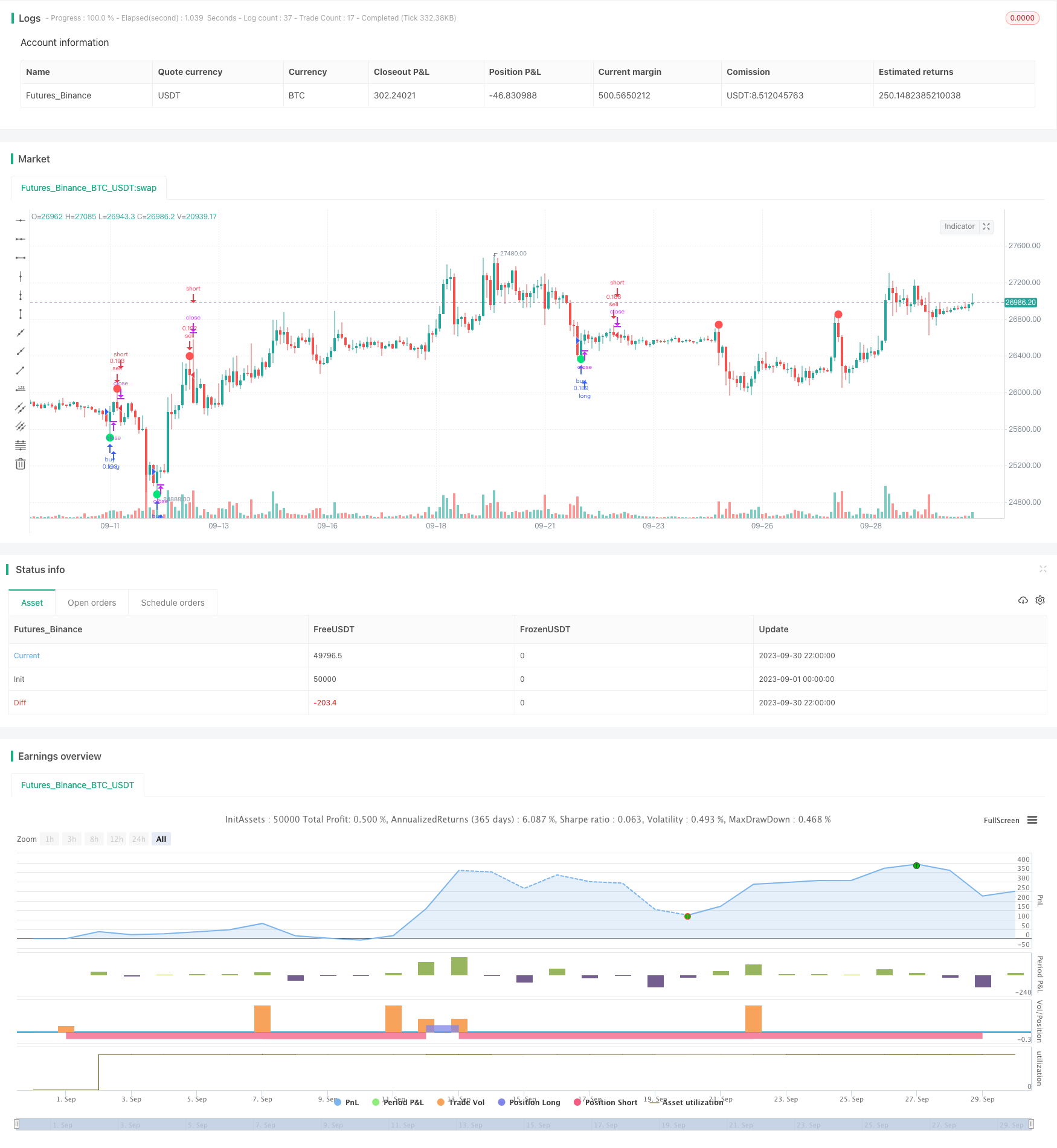
概述
蕾蕾DEC策略通过识别蕾蕾DEC指标的穷尽形态,来判断市场趋势反转的时机。当出现主要蕾蕾DEC穷尽形态时,做多;当出现次要蕾蕾DEC穷尽形态时,做空。该策略主要适用于中长线交易。
策略原理
蕾蕾DEC指标用于识别价格的局部极值点。它通过统计多根K线的收盘价与开盘价的关系,来判断该点是否是一个潜在的极值点。
该策略的核心逻辑是:
计算主要蕾蕾DEC指标(maj),参数为bar计数(maj_qual)和查找范围(maj_len)。
当主要蕾蕾DEC连续向上突破maj_qual根K线,并且这根K线的最高价超过之前maj_len根K线的最高价,则视为主要蕾蕾DEC向上穷尽,产生做多信号。
计算次要蕾蕾DEC指标(min),参数为bar计数(min_qual)和查找范围(min_len)。
当次要蕾蕾DEC连续向下突破min_qual根K线,并且这根K线的最低价低于之前min_len根K线的最低价,则视为次要蕾蕾DEC向下穷尽,产生做空信号。
根据蕾蕾DEC指标的原理,穷尽形态表示该点附近可能是一个极值点和趋势反转点,因此产生交易信号。
优势分析
该策略具有较强的趋势判断能力。蕾蕾DEC指标可以有效识别出价格的局部极值点。
通过不同参数组合,可以灵活适应不同周期和市场环境。
可单独使用主要蕾蕾DEC信号,也可以结合次要蕾蕾DEC信号,实现更全面和准确的判断。
可设置不同的bar计数和查找范围参数,调整策略的灵敏度。
风险分析
如其他指标一样,蕾蕾DEC指标也可能出现假信号,需要结合其他指标进行验证。
需要优化参数,以适应不同周期和品种。参数设置不当可能出现频繁交易或漏单的问题。
该策略主要基于K线形态,可能会错过短期价格震荡中的机会。
需要关注突破蕾蕾DEC信号的K线实体部分,防范趋势反转失败。
优化方向
优化参数组合,提高参数的适应性。可以考虑动态优化参数。
结合其他指标进行过滤,如量能指标、移动平均线等,提高信号的可靠性。
加入止损策略,控制单笔损失。
结合短期指标,抓住短期价格波动中的机会。
测试不同的交易品种,寻找最佳适用环境。
优化资金管理策略,如持仓规模、仓位管理等。
总结
蕾蕾DEC策略通过捕捉蕾蕾DEC指标的极限形态,来判断潜在的趋势反转点,是一种较好的趋势跟踪策略。该策略具有判断市场趋势的优势,但需要深入优化,辅以其他指标进行过滤验证,并做好风险管理,才能长期稳定盈利。整体来说,蕾蕾DEC策略为我们提供了另一种有价值的交易工具。
/*backtest
start: 2023-09-01 00:00:00
end: 2023-09-30 23:59:59
period: 2h
basePeriod: 15m
exchanges: [{"eid":"Futures_Binance","currency":"BTC_USDT"}]
*/
// This source code is subject to the terms of the Mozilla Public License 2.0 at https://mozilla.org/MPL/2.0/
// © Joy_Bangla
//@version=4
strategy("A Strategy for Leledec", shorttitle ="Leledec Strategy", overlay=true, commission_value=0.075, initial_capital=10000, default_qty_type = strategy.percent_of_equity, default_qty_value = 10)
maj = input(true, "Major Leledec Exhausion Bar :: Show")
min=input(false, "Minor Leledec Exhausion Bar :: Show")
leledcSrc = input(close, "Major Leledec Exhausion Bar :: Source")
maj_qual = input(6, "Major Leledec Exhausion Bar :: Bar count no")
maj_len = input(30, "Major Leledec Exhausion Bar :: Highest / Lowest")
min_qual=input(5, "Minor Leledec Exhausion Bar :: Bar count no")
min_len=input(5, "Minor Leledec Exhausion Bar :: Bar count no")
bindexSindex = input(1, "bindexSindex")
closeVal = input(4, "Close")
lele(qual, len) =>
bindex = 0
sindex = 0
bindex := nz(bindex[bindexSindex], 0)
sindex := nz(sindex[bindexSindex], 0)
ret = 0
if close > close[closeVal]
bindex := bindex + 1
bindex
if close < close[closeVal]
sindex := sindex + 1
sindex
if bindex > qual and close < open and high >= highest(high, len)
bindex := 0
ret := -1
ret
if sindex > qual and close > open and low <= lowest(low, len)
sindex := 0
ret := 1
ret
return = ret
return
major = lele(maj_qual, maj_len)
minor=lele(min_qual,min_len)
plotchar(maj ? major == -1 ? high : na : na, char='•', location=location.absolute, color=color.red, transp=0, size=size.large)
plotchar(maj ? major == 1 ? low : na : na, char='•', location=location.absolute, color=color.lime, transp=0, size=size.large)
plotchar(min ? (minor==1?high:na) : na, char='x', location=location.absolute, color=color.red, transp=0, size=size.small)
plotchar(min ? (minor==-1?low:na) : na, char='x', location=location.absolute, color=color.lime, transp=0, size=size.small)
leledecMajorBullish = major==1?low:na
leledecMajorBearish = major==-1?high:na
leledecMinorBullish = minor==1?low:na
leledecMinorBearish = minor==-1?high:na
buySignalBasedOnMajorLeledecOnly = major==1?low:na
sellSignalBasedOnMajorLeldecOnly = minor==-1?high:na
// === INPUT BACKTEST RANGE ===
fromMonth = input(defval = 1, title = "From Month", type = input.integer, minval = 1, maxval = 12)
fromDay = input(defval = 1, title = "From Day", type = input.integer, minval = 1, maxval = 31)
fromYear = input(defval = 2018, title = "From Year", type = input.integer, minval = 2017, maxval = 2030)
thruMonth = input(defval = 12, title = "Thru Month", type = input.integer, minval = 1, maxval = 11)
thruDay = input(defval = 1, title = "Thru Day", type = input.integer, minval = 1, maxval = 30)
thruYear = input(defval = 2030, title = "Thru Year", type = input.integer, minval = 2017, maxval = 2030)
// === INPUT SHOW PLOT ===
showDate = input(defval = true, title = "Show Date Range", type = input.bool)
// === FUNCTION EXAMPLE ===
start = timestamp(fromYear, fromMonth, fromDay, 00, 00) // backtest start window
finish = timestamp(thruYear, thruMonth, thruDay, 23, 59) // backtest finish window
window() => time >= start and time <= finish ? true : false // create function "within window of time"
if (window())
strategy.entry("buy", strategy.long, when=buySignalBasedOnMajorLeledecOnly)
strategy.entry("sell", strategy.short, when=sellSignalBasedOnMajorLeldecOnly)